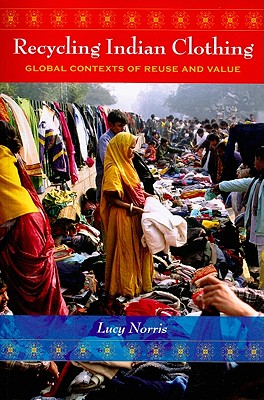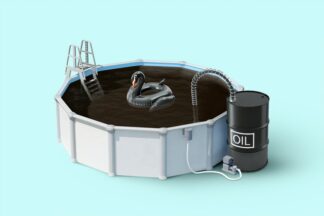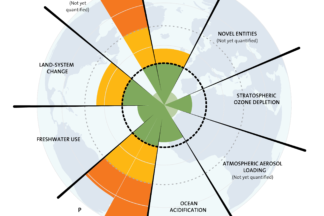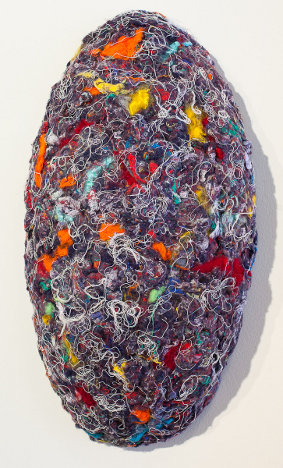The Higg Index is an apparel and footwear industry self-assessment standard for assessing environmental and social sustainability throughout the supply chain.
The Higg Index 1.0 was released on June 26, 2012.
Grom is an Italian, organic and ethical ice cream brand. But beyond this achievement, all their consumables are biodegradable and compostable. At no extra price to the consumer.
The RSA brought together a group of thinkers and practitioners who have each been exploring ways to bring the principles of 'slow' to their life and work – whether in finance, culture or fashion. A brief summary, and some key insights.
Indigo is probably the most famous of all dye stuffs. Hacienda Los Nacimientos is one of only 2 farms world wide that produce certified organic Indigo, and is located in El Salavador. The farm's story reaches far back, and is marked by the years the country suffered from a violent guerilla civil war.
The most recent event in the 'Perspectives on Future Sustainable Design' series highlighted the progress made in developing sustainable design approaches. Both, from a theoretical as well as from a systemic point of view. A summary.
The Guardian Sustainable Business & Observer Ethical Awards 2012 edition in fashion terms. Cradle to Cradle is becoming popular in the nitty gritty of the carpet industry, Puma's Profit and Loss Accounts get credit, and Kids imitate Katherin Hamnett's 1980's slogan T-shirts to raise awareness.
Italy. Known for the style of its inhabitants, the quality and sharp cut of its suits, the inventiveness of its fashion designers, the quality of its fabrics. Yet, if we were to talk sustainability in textiles and fashion, what is going on on the ground?
J&R Designs in Homerton is a small factory in London's East End, the only remaining of its kind, run by the Persaud family, and which specialises in hand crafted quality leather handbags manufacturing. A portrait.
Discarded at one time, and hidden away in a drawer of the family home or even flogged off in a car boot sale, 'Little Glass Clementine' turns the most improbable centre piece of unique necklaces, each made 'to measure' for the personality and character of its new owner.
This book emerges itself into how clothing is bought, worn, discarded and recycled within India. In other words, it tracks down how Indian citizens (primarily women) manage their wardrobes, and the strategies and criteria of how they do it.
Anna Grindi was coveted dress maker from Tempio Pausania, a town in northern Sardinia. And enchanted by the possibility of cork for fashion. Her obsession lead to the development of cork fabrics that today are the foundations to her very successful company Suberis, turning over millions of Euros. A portrait.
This article has originally been published online by ‘Japan for Sustainability’ (JFS) on May 30, 2005. It is the 1st...
Many of the most important resources our current civilisation depends on – all of them finite natural resources - form part of what historically would have been called ‘The Commons’. And yet, many of them are economically treated as 'income' and not the valuable and finite 'assets' they are. That again is the tragedy of the commons.
“Innovatively combining new British and sustainable fabrics with reclaimed textiles” – this is Goodone’s raison d’etre in their own words. Their most recent initiative: A proper upcycling factory that can cope with both, pre- and post-consumer waste, and is the first ‘streamlined’ upcycling facility equipped and ready to work with designers on something more than one-offs.
Overconsumption or ‘simply’ consumption?
Fair resource use, or resource depletion?
Fair share, equal share or acquired share of resources?
Those are questions that pop up when the Planetary Boundaries are being discussed.
“Is Europe living within the limits of our planet?: An assessment of Europe's environmental footprints in relation to planetary boundaries”, published in April 2020 does exactly that: it evaluates and calculates the European performance for planetary boundaries by taking a consumption-based (footprint-based) perspective. This is turn is interesting as it relates environmental pressures to final demands for goods and services.
And the results are ... shall we say: a stark call to action.
Panipat is an ancient and historic city in the Panipat district, state of Haryana, India. The city is the global centre of “Shoddy Yarn”. It is a business that is worth 1 billion dollars world wide. 85% of the volume is for the domestic marketm 15% for export. But the industry has more shadows then there is light ...
Cork is one of the most sustainable natural materials extant. Portugal supplies about two thirds of the world's cork, but the increased use of plastic bottle stoppers for wine, instead of cork, poses a threat to the country's industry. This post presents some data around cork and describes the bigger picture. The follow up post will look at how innovative uses of cork find application in fashion.
Cork is one of the most sustainable natural materials extant. Portugal supplies about two thirds of the world's cork, but the industry has been under pressure in the past few decades. This post shows how innovative companies have found application for the material in the realm of fashion.
The second Future Fabrics Expo was hosted at the London College of Fashion on November 7th – 9th 2013, and was attended by a rather large number designers, buyers and students. Roughly 650 fabrics with a reduced environmental impact stemming from around 50 textile mills world-wide, were showcased, along with inspirational and/or interactive videos and information panels.
The design stage is usually the longest, most expensive and riskiest part of the chain. Additionally, research has shown that at least an estimated 80% of a product's environmental (and to a lesser degree also social) impact is locked at the design stage into a product. By integrating the product design with the supply chain, companies can compress non-value adding time and costs in their supply chains, increase responsiveness and mitigate supply chain risks – while simultaneously managing (improving) their sustainability performance without added costs or efforts.





